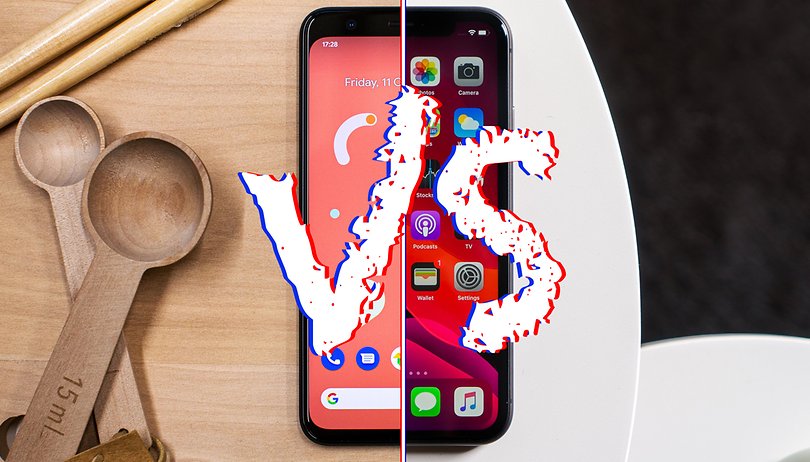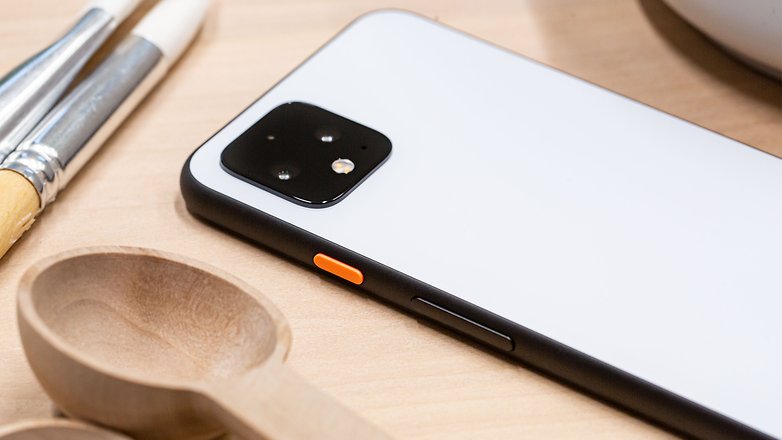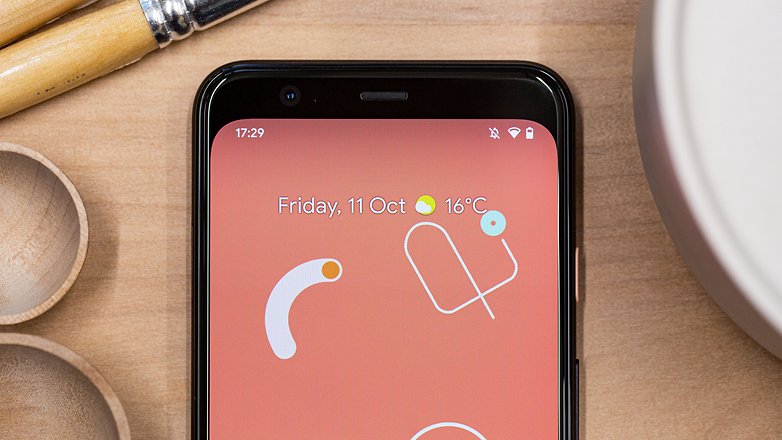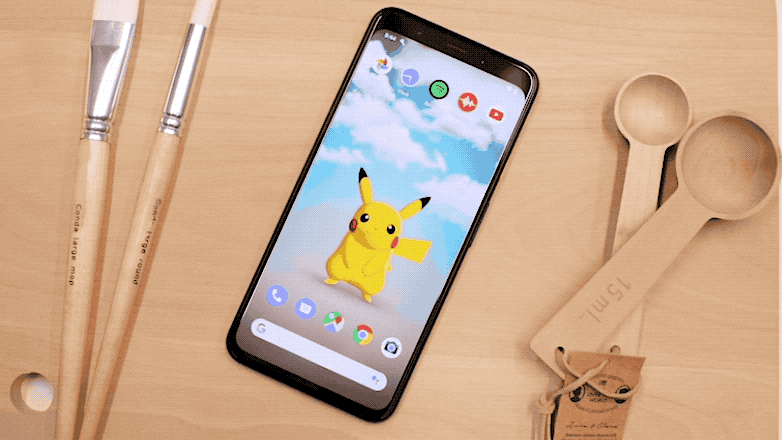Google Pixel 4 vs iPhone 11 Pro: it's tight at the top

'Techtober', as the month has been referred to tech media and fans this autumn, is starting to wrap up. We've already seen the launch of the Apple iPhone 11 Pro and now Google's Pixel 4. These two smartphones go head-to-head on both camera quality and facial unlocking tech. So which is better?
Jump to section:
The launch of the new iPhones always sparks the Android versus iOS debate but it also provokes a lot of smartphone fans to consider making the switch one way or the other. The Pixel 4 is perhaps the purest Android device you can buy. The Made by Pixel smartphone is essentially the Android smartphone without a trace of third-party flair. It's Google's smartphone built for Google's software, in much the same way Apple creates that special chemistry between hardware and software. But who does the combination best? Let's find out.
Camera quality: draw
The Google Pixel phones have long been the standard for photography on Android. Despite having only a single 12-megapixel camera sensor, Google's software worked wonders in the background. The Pixel 3 camera was extraordinary and its Night Shot mode was the best on the market until the Huawei P30 Pro turned up. This year, however, the competition for being the top camera in a smartphone is much more fierce.
Apple went big on the camera this year with its Pro version of the iPhones for 2019. Clearly miffed about being trumped by several Android smartphones, namely the Pixel 3 and P30 Pro, Apple decided it wants to be back on top. The iPhone 11 Pro features a triple rear setup and a completely revamped camera app. The result is impressive, and Apple is certainly back at the top in terms of computational photography.

Google has also decided it's finally time to add more sensors to the rear camera. For the first time ever, a Pixel smartphone features a dual rear camera. For 2019, a 16-megapixel telephoto lens joins the regular sensor, now a 12.2-megapixel lens. Hardware is only part of the battle here because, as we know, it has been on the software side that Google has achieved its plaudits in the camera department. Both of these phones are now doing incredible things with artificial intelligence and image processing.
Apple is ahead when it comes to selfies, however. The iPhone 11 Pro features a 12-megapixel front-facing camera compared to the Pixel 4's 8-megapixel sensor. There's also no autofocus on Google's smartphone when it comes to taking selfies and, in addition, Apple has fine-tuned its software and added new features such as the one for 'Slofies' - allowing users to take slow-motion selfie videos.
This is a really close battle, with Apple finally catching up to the Pixel phones which, along with the impressive P30 Pro, have bee dominating
Face unlock technology: draw
Moving to the front camera, Google has brought some facial unlocking technology worthy of taking on Apple's impressive Face ID this year. That large top bezel on the front of the Pixel 4 is packed with radar-based motion sensors, a Dot Projector, and two IR cameras. There's also a Flood Illuminator in there too. All of this technology combines to create a quick and seamless Facial Unlocking system.

Apple also upgraded its Face ID technology in the 2019 iPhone's, although the tech is housed in that wide notch rather than in a fat bezel. Apple says it is now 30 percent faster than before and that it can work at wider angles than before. We found it to be a worthy upgrade during our test. Google has made the bigger jump here from the previous generation, but it had a lot of ground to make up. We'll call this one a draw, as both the Pixel 4 and iPhone 11 Pro have fantastic systems on board for unlocking the smartphone with your face.
Display: Google wins
Apple's new Super Retina XDR display is excellent, but aside from an increased contrast value, it hasn't changed since the iPhone X from 2017. It's still a great display, but if you already own a recent iPhone and are looking for something that feels next level, you won't find it here. The resolution is is still 2,436 x 1,125 pixels (458 ppi).
Google, on the other hand, has innovated with the display of its latest Pixel 4 smartphone. Here you are getting a 5.7-inch P-OLED display. It is not quite as sharp as Apple's (1080 x 2160 pixels, 444 ppi) but it has a trick up its sleeve that Apple can't match - a 90Hz refresh rate.

Anyone who has used a OnePlus 7 Pro, 7T or 7T Pro recently will understand what a difference a 90Hz refresh rate makes to the overall smoothness of the display. Scrolling is a joy. It's hard to go back to 60 once you've had 90. For this reason, and this reason alone, I'm awarding the win to Google for display quality.
Software: draw
The debate over iOS and Android is long-running and tends to come down to personal tastes and comfort rather than any objective arguments for which is better or worse. With iOS 13 and Android 10, the two mobile platforms are growing closer together. It's been of a game of give and take for some years now, with both sides pinching the best ideas from each other's software and implementing their own versions of the features.
Android 10 and iOS both feature, as of 2019, a system-wide dark mode and gesture navigation. There's also a voice assistant baked-in in the form of Google Assistant and Siri, although Google performs better in this area.

One area where Apple scores points is the new 'Log in with Apple' feature. We've seen this for some time with Google and Facebook, but Apple's service focuses on security and privacy and does not share your email address with the site you are logging into, reducing the likelihood of targeted ads and social tracking for its users.
Ultimately, iOS and Android are both great operating systems and for 90 percent of users, what you are most used to what you'll likely enjoy best. It is tough to switch between the two and break old habits. One thing I will say, however, is that if you are thinking of going from iOS to Android or vice versa, prepare yourself for a period of adjustment where things feel strange and counter-intuitive at first, but you soon get used to it.
Battery life: Apple wins
On paper, the battle for best battery life between the iPhone 11 Pro and the Google Pixel 4 looks relatively close. The Apple smartphone features a 3,046 mAh cell whilst the Google phone has just 2,800 mAh. In practice, however, Apple has dramatically improved the efficiency of its software and, thanks to the new A13 Bionic chip, battery life on the new iPhone line is excellent.
Google says it has also optimized its software to be more energy-efficient, but as the phones are brand new we've not had the chance to truly put this to the test over a longer period of use. We'll have to wait and see if those claims hold up. Battery life seems to be another area where Apple has closed the gap on the Pixel, and the traditionally stingy Cupertino company now even puts a decent charger in the box as standard (18-Watt).
Price: Google wins
Apple has managed to get it's iPhone 11 Pro on the market for under a grand, but only just. The entry-level version costs $999, but you'll only get 64GB of internal storage for that price. If you want a more manageable 256GB, you'll have to fork out $1,149. The 512GB costs $1,349. Whichever way you slice it, the iPhone 11 Pro is expensive.
The Google Pixel 4, on the other hand, is a little cheaper. That's not to say it is cheap. With smartphones coming onto the market at the $400-$500 price point that are taking on the likes of these flagships in all areas, and more than holding their own. Both of these phones are expensive, it's just that the Apple device will leave a bigger hole in your pocket than the one Made by Google.
Technical specifications
Whether Pixel or iPhone, both have current flagship processors. The Snapdragon 855 from Qualcomm works in the Pixel 4, while the iPhone uses Apple's own A13 Bionic chip. The Pixel has 6GB of RAM. The iPhone has at least 4 GB, but it's not completely clarified yet - and Apple itself never confirms it.

There's one more thing they have in common: Both smartphones start with 64GB of storage. While Google offers a model with 128GB, Apple skips this memory size and instead offers a variant with 256GB as well as one with 512GB.
Google Pixel 4 vs iPhone 11 Pro
| Google Pixel 4 | Apple iPhone 11 Pro | |
|---|---|---|
| Display | 5.7 inch, OLED |
5.8 inch, OLED 60 Hz |
| Dimensions | 147.1 x 68.8 x 8.2 mm | 144 x 71.4 x 8.1 mm |
| Weight | 162 grams |
188 grams |
| OS | Android 10 | iOS 13 |
| Processor | Qualcomm Snapdragon 855 | Apple A13 Bionic |
| Memory | 6GB RAM |
4GB RAM 64/256/512GB |
| Battery | 2800 mAh | 3079 mAh |
| Camera | Rear: 12 megapixels, f/1.6, 28mm |
Rear: 12 megapixels, f/2.4, 13mm, 12 megapixels, f/1.8, 26mm 12 megapixels, f/2.0, 52mm Front: 12 megapixels, f/2.2, 23mm |
| Special Features | 3D Face Unlock Motion Sense IP68 |
Face ID IP68 |
| Price | xxx | $999/$1149/$1349 |
The final word
Choosing between these two flagship smartphones is a really tough call. In areas where it was previously easy to pick a winner, the rival has caught up. Apple has made huge improvements to its camera hardware and software to the extent that it is no longer a given that the Pixel would be the go-to phone in our editorial office if we needed to take a picture at an event and didn't have a proper photographer with us. Likewise, Google's new facial unlocking system has closed the gap on Apple's Face ID, which was previously miles ahead of anything on Android.
Interestingly, the iPhone 11 Pro and Pixel 4 each win in two areas that are very important to consumers: battery life and price. These two things perhaps drive sales of smartphones more than any other. Apple's battery management is impressive in 2019, but the price tag is still high. If you are torn between these two devices, go with the operating system you are most familiar with. You won't be missing out on much from the other side.




At least with an iPhone 11 you get symmetrical bottom/side bezels.
-
Admin
Oct 16, 2019 Link to commentBoth phones are not selling well. Consumers are trying to hang on their devices for longer now and there are phones on sale with the same specs at a much lower price. The way to go, in my opinion, is to build better devices, designed to last longer and at affordable prices.Having new devices every six months or every year is madness and has saturated and distorted the market
The difference between the two is that this may be the last of the Pixel phones. Fugly as hell, overpriced, new competition from OnePlus, Oppo, and Redmi will cannibalize their incredibly small market share.
I'm going to make a bold statement. The iPhones cameras are better than the pixals. I'm not an Apple fan but honesty their cameras are class leading!